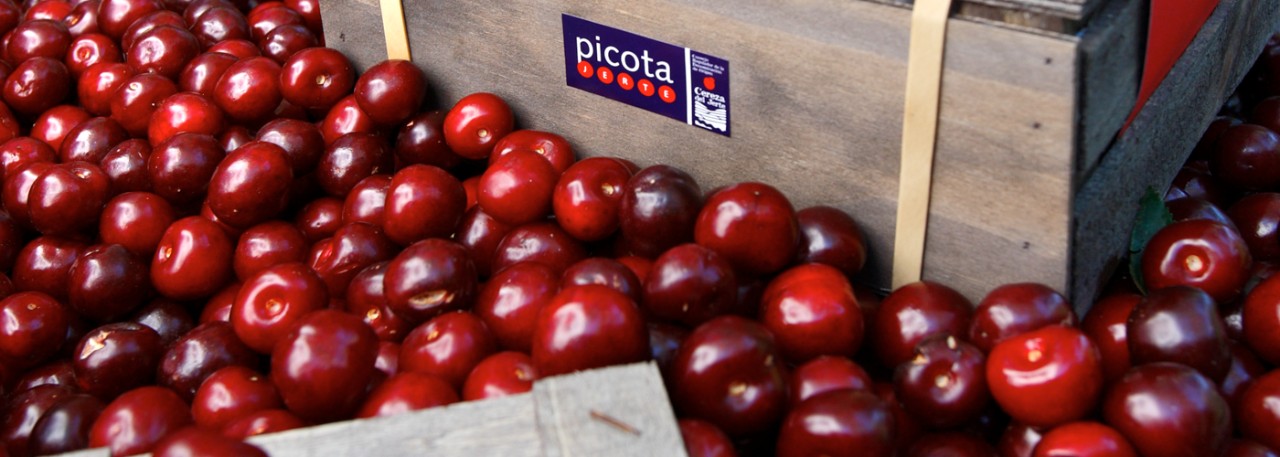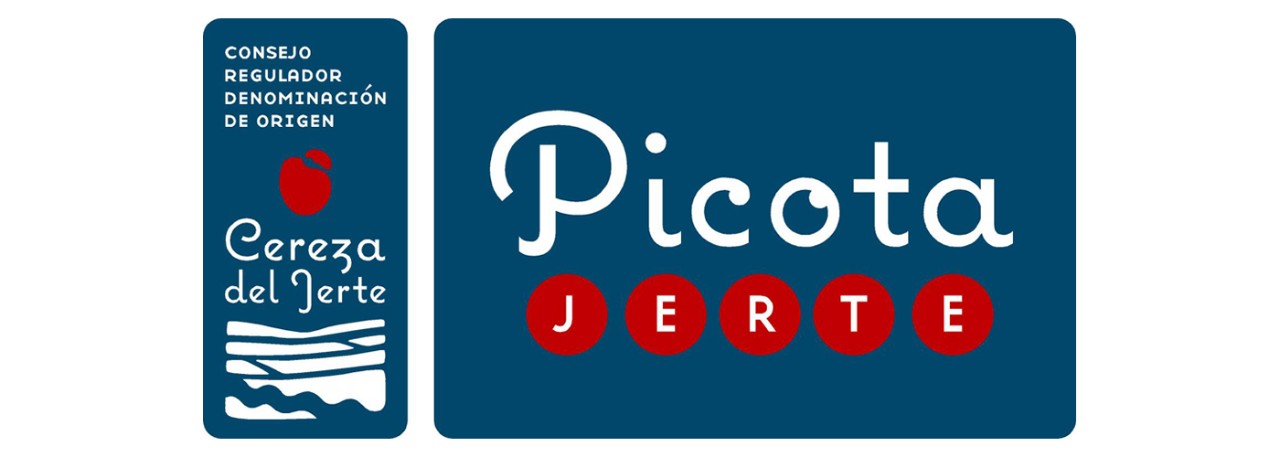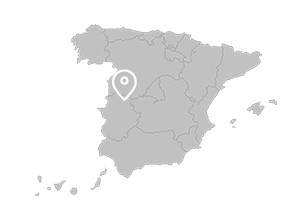.png.transform/rendition-xs/image_image%20(1).png)
Cereza del Jerte PDO
Cherries to be eaten fresh, mainly without the stem, and generically known as Picotas del Jerte, of the Ambrunés, Pico Negro, Pico Limón Negro and Pico Colorado varieties. The stemmed variety covered by the PDO is Navalinda.
Tasting notes
Flavor is the main distinguishing characteristic of Jerte cherries, both because of their high sugar content and the balance between sweetness and sharpness. The flesh is juicy and usually crisp. Color depends on the variety - from red juice and red flesh, to colorless juice and yellow or cream flesh. The color of the flesh and juice is usually stable, especially that of the juice. The flesh in the varieties named above is medium firm to very firm.
Other notes
The cherries come in varying shades of red, depending on the variety, but wine-red or purplish-red cherries predominate, mostly of the Ambrunés variety. Other varieties in the stemless group are an orangey-red, such as Pico Colorado and, to a lesser extent, purplish-black such as Pico Negro and Pico Limón Negro.
Flesh firmness is a very important factor for determining quality because it indicates whether the cherry was picked at optimum ripeness.
Average sugar content is much higher than normal, with a refractive index from 12-20 gr / ½-¾ oz per 100 gr / 3½ oz in weight, depending on the variety and degree of ripeness. Average pH is close to 5.5, so the fruit is slightly sharp. The sharpness is higher in early cherries and develops in the opposite direction in stemless cherries.
Production / Processing method
The growing area is limited by the relief. Most of the farms are located on small terraces held back by stone walls, on steeply sloping hillsides.
Plant density here refers to the distance between trees. It is not possible to speak of the distance between lanes because 95% of the plots are on terraces so have a single line of trees. Normal density is 8 m / 26¼ ft from trunk to trunk. The number of trees per hectare (2,471 acres) is 125.
Although in recent years nursery-grafted trees are being introduced, the traditional and most common process is to bring the trees from the neighboring mountain areas, treat any pests or diseases and plant them. This is done in fall and winter. When trees are one to two years old, they are grafted, usually in January or February.
Fertilization mostly uses natural methods, manure and burying weeds. Nitrogen, calcium or potassium supplements are added as necessary. Fruiting trees are pruned lightly, by heading back and thinning out. Young trees are usually formed by removing branches and trimming the tips to force them to send out branches. To give the trees the vigor and breadth needed by the wild cherry rootstock, orchards are generally pruned in the vase shape.
Land ownership is mostly in the form of small holdings so labor is mostly provided by family members. Fruit collection is hard work and requires skill. The cherries have to be picked by hand, one by one. No mechanical alternatives are possible because of the delicacy of the fruit and the complexity of the growing system. Harvesting must take place during the cooler times of the day to give firm, top-quality cherries. They should also be picked at optimum ripeness and at the right temperature.
The cherries are sorted either in the orchards or in the registered storehouses. The aim is to remove any defective, damaged, cracked or poorly-colored fruits. After sorting and sizing, they are separated by variety, color and size to gain maximum product uniformity.
They must be handled with care and the packs used must be clean and new, avoiding any damage to the fruit. Each pack must have the same content, with regard to place of origin, variety, quality and size. The visible part of each pack must be representative of the rest.
Geography / Relief and climate
The farms are located on rugged, rough land with average slopes in excess of 30%. The very high mountains that surround the three valleys mean that there are great differences in altitude. Over a distance of just 50 km / 31 miles, the landscape drops sharply from 2,400 m / 7,874 ft at the peaks to less than 350 m / 1,140 ft, the altitude of the city of Plasencia.
The characteristics of the soil – with a sandy, granitic texture, good drainage, acid pH, low calcium levels – seem to determine the development of the predominating rootstock (Prunus avium or wild cherry) and of the local varieties.
The area has its own specific climate because of its narrowness and depth as well as the fact that it faces south. Average annual rainfall is between 1,000 and 1,500 mm, the latter being reached in the highest parts, so the area can be defined as having a wet mountainous climate. Much of the annual rainfall takes the form of snow. There is a significant, short, dry period in the summer when rainfall in the hot months of July and August scarcely reaches 33 mm per month. Average annual temperatures are warm but they vary greatly from season to season. In general, the climate is harsh, as shown by a temperature variation of 18.9ºC / 66.2ªF.
Regulatory Council
Consejo Regulador de la DOP Cereza del Jerte
Polígono Industrial - Ctra. N 110, Km.381,4
10613 Navaconcejo (Cáceres)
Extremadura
Tel: (+34) 927 471 101
picota@cerezadeljerte.org
www.cerezadeljerte.org/
Sources:
Flesh firmness is a very important factor for determining quality because it indicates whether the cherry was picked at optimum ripeness.


- /content/dam/en/icex-foodswines/images/products/fruits---vegetables/cereza-del-jerte-pdo/Cereza%20del%20Jerte%20PDO%20carr1.jpg
- /content/dam/en/icex-foodswines/images/products/fruits---vegetables/cereza-del-jerte-pdo/Cereza%20del%20Jerte%20PDO%20carr2.jpg

Navaconcejo (Extremadura)
